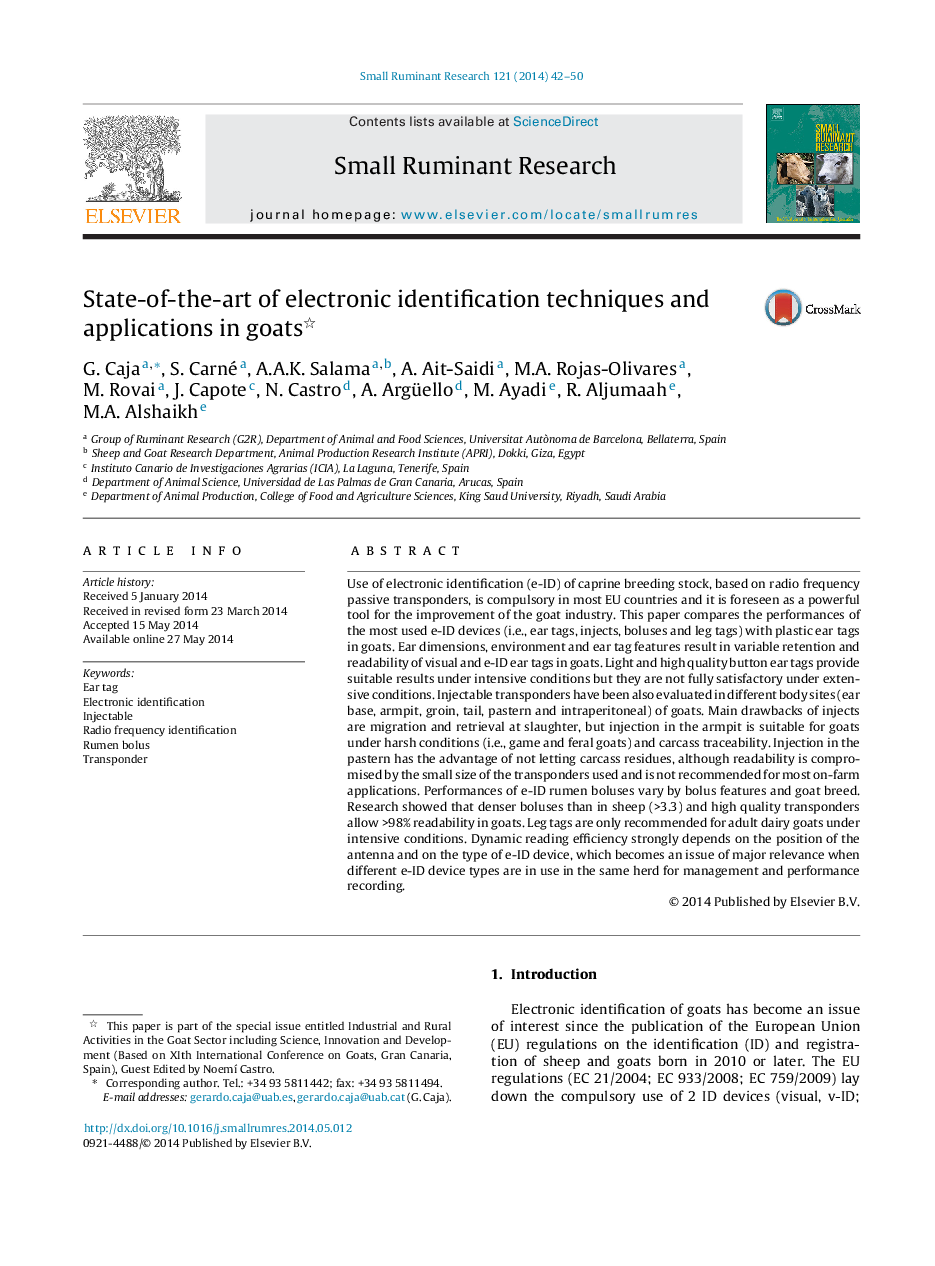| کد مقاله | کد نشریه | سال انتشار | مقاله انگلیسی | نسخه تمام متن |
|---|---|---|---|---|
| 2457030 | 1110671 | 2014 | 9 صفحه PDF | دانلود رایگان |

Use of electronic identification (e-ID) of caprine breeding stock, based on radio frequency passive transponders, is compulsory in most EU countries and it is foreseen as a powerful tool for the improvement of the goat industry. This paper compares the performances of the most used e-ID devices (i.e., ear tags, injects, boluses and leg tags) with plastic ear tags in goats. Ear dimensions, environment and ear tag features result in variable retention and readability of visual and e-ID ear tags in goats. Light and high quality button ear tags provide suitable results under intensive conditions but they are not fully satisfactory under extensive conditions. Injectable transponders have been also evaluated in different body sites (ear base, armpit, groin, tail, pastern and intraperitoneal) of goats. Main drawbacks of injects are migration and retrieval at slaughter, but injection in the armpit is suitable for goats under harsh conditions (i.e., game and feral goats) and carcass traceability. Injection in the pastern has the advantage of not letting carcass residues, although readability is compromised by the small size of the transponders used and is not recommended for most on-farm applications. Performances of e-ID rumen boluses vary by bolus features and goat breed. Research showed that denser boluses than in sheep (>3.3) and high quality transponders allow >98% readability in goats. Leg tags are only recommended for adult dairy goats under intensive conditions. Dynamic reading efficiency strongly depends on the position of the antenna and on the type of e-ID device, which becomes an issue of major relevance when different e-ID device types are in use in the same herd for management and performance recording.
Journal: Small Ruminant Research - Volume 121, Issue 1, September 2014, Pages 42–50